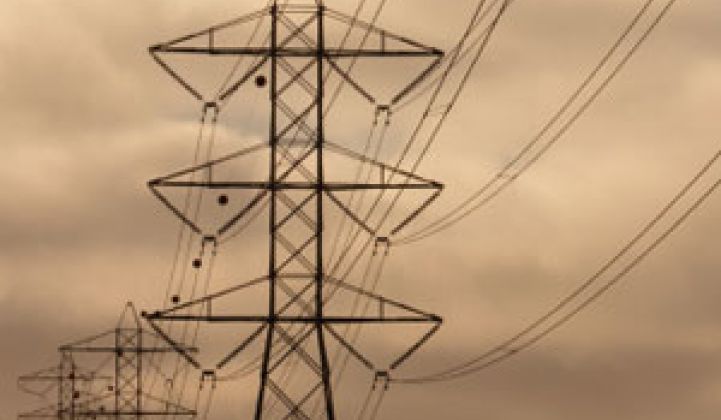The California Public Utilities Commission could vote as early as Dec. 4 on the fate of a controversial 150-mile transmission line for San Diego Gas & Electric Co. to ferry renewable energy from the desert of southeastern California to the coast.
The commission heard several hours of arguments last Friday on the Sunrise Powerlink Transmission Project, which is estimated to cost $1.7 billion and could run through the Anza-Borrego Desert State Park. SDG&E said the project is needed to make sure it can meet the state's mandate for all investor-owned utilities to get 20 percent of its electricity from renewable sources by 2010. Additionally, Gov. Arnold Schwarzenegger supports the project.
The San Diego utility wants the new line, which will deliver up to 1 gigawatt of power from some of the solar and geothermal power plants, under development in Imperial Valley. Opponents want the commission to gut the project all together, arguing that the project is unnecessary and would harm the environment.
The fight highlights the growing number of conflicts between utilities and community groups across the country over building power lines to meet renewable energy mandates by states (see SoCal Edison to Buy 909MW of Wind Power).
Utilities and many renewable energy advocates, such as Al Gore, have championed upgrading and building new transmissions to replace the United States' aging electric grid. They say a revamped grid is needed to support the growth of solar and wind energy projects, some of which are located in remote areas. To do so could cost $900 billion by 2030, according to the Brattle Group (see National Grid: Dream or Reality? and Al Gore Sets Energy Goal).
In fact, a report released Monday by the North American Electric Reliability Corporation said consumers could experience more blackouts if no serious efforts are taken to improve the grid. The current grid could be overloaded with the increasing amount of solar, wind and other renewable energies that the utilities are adding. More than half of states have set mandates to use more alternative energy and reduce greenhouse gas emissions (see Will Carbon Credits Mean Blackouts?).
But critics of the Sunrise Powerlink project say SDG&E should focus on developing solar and other renewable energies within its service area instead of building costly transmission lines. The utility, a subsidiary of Sempra Energy (NYSE: SRE), serves 3.4 million customers in San Diego and southern Orange County.
The commission seems to be siding with the critics for now. An administrative law judge has proposed to reject the project, saying SDG&E doesn't need the line to meet the state's renewable energy mandate.
The proposed decision goes on to say that the project, if built, would cause extensive environmental damage and cost too much for the ratepayers, who will have to help pay for it.
A second proposed decision, by Commissioner Dian Grueneich, also would deny the utility's request to build the project through the state park or any American Indian tribal land. But it would allow SDG&E to build an alternative route provided that the utility agrees to use the line mostly for transporting renewable energy.
Grueneich's proposed decision also notes that Sunrise Powerlink isn't needed to meet the 2010 renewable energy mandate, but it will be needed to meet a 33 percent requirement that states want the utilities to meet by 2020.
At the recent commission hearing, SDG&E's CEO Debra Reed said the utility couldn't consent to signing an agreement that would require it to use Sunrise Powerlink largely for renewable power.
Join industry leaders and influencers at Greentech Media's new conference series Greentech Innovations: End-to-End Electricity on November 17 and 18 in New York City.



